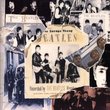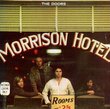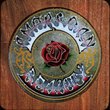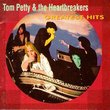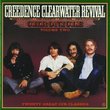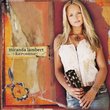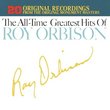| All Artists: Jethro Tull Title: Living in Past Members Wishing: 3 Total Copies: 0 Label: Capitol Original Release Date: 1/1/1972 Re-Release Date: 9/14/1999 Album Type: Original recording reissued Genres: Pop, Rock, Classic Rock, Metal Styles: Blues Rock, Progressive, Progressive Rock, Album-Oriented Rock (AOR) Number of Discs: 1 SwapaCD Credits: 1 UPCs: 094632103529, 4988006818811, 094632103543, 762185167649 |
Search - Jethro Tull :: Living in Past
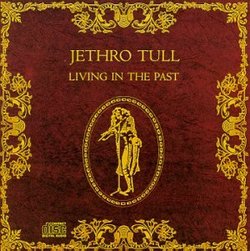 | Jethro Tull Living in Past Genres: Pop, Rock, Classic Rock, Metal
An unconventional best-of collection at the time of its 1972 release, Living in the Past existed to gain a greater foothold in America for Jethro Tull following the breakthrough success of Aqualung. And it did, by offerin... more » |
Larger Image |
CD DetailsSynopsis
Amazon.com essential recording An unconventional best-of collection at the time of its 1972 release, Living in the Past existed to gain a greater foothold in America for Jethro Tull following the breakthrough success of Aqualung. And it did, by offering a little something for everyone. There are a number of songs that became FM radio staples, ranging from the heavy rock of "Teacher" and "Hymn 43" to lighter fare, such as the title tune. A pair of jam-heavy selections, "By Kind Permission Of" and "Dharma for One" (featuring the era's requisite in-concert drum solo), were recorded live at Carnegie Hall. Overall, Living in the Past does an excellent job of revealing Tull's achievements and limitations, its ambitions as well as its pretensions. --Daniel Durchholz Similarly Requested CDs
|
CD ReviewsWithout This Album, The Band's History Is Incomplete Steve Vrana | Aurora, NE | 12/27/2001 (5 out of 5 stars) "This was a stopgap album between studio releases Thick as a Brick (1972) and A Passion Play (1973). It also served to capitalize on the band's surge in popularity in the United States following the release of their fourth album Aqualung, which was Tull's first US top 10 album. Most reviewers have made the same comment regarding the content change between the original LP and the CD release. The mistake they make is based on the error that is made in the "consumer note" on the CD. Yes, two tracks were deleted from the original vinyl: "Bouree" (leaving no tracks from their sophomore effort Stand Up) and "Teacher" (leaving only "Inside" from their third album Benefit). But there was a third track deleted from the original vinyl. Track-2 on Side-4 was "Locomotive Breath." [I know this because I still have my vinyl copy from 1972. Also missing is the 14-page color insert, which has been reduced to two pages with the CD reissue and only a fraction of the more than 50 photos in the original.] One other difference should be noted between the two track listings. The original vinyl release did NOT include "Hymn 43." [Note: The Gold CD issue of Living in the Past includes all 23 tracks, so you get the combined LP/CD track listing. But it's going to cost you enough extra that it would make more sense to simply buy the individual albums.]With that said, Living in the past is essential classic period Jethro Tull to warrant its purchase even if you own the individual albums. Many of these tracks were non-album singles, B-sides and live tracks. "Love Story" was Tull's first UK hit (#29, 1969), followed by "Living in the Past" (#3, 1969), "Sweet Dream" (#7, 1969), "Witches Promise" (#4, 1970) and "Life Is a Long Song" (#11, 1971). Tull's first charting US single would be "Hymn 43" (#91, 1971), and their first Top 40 hit would be when "Living in the Past" hit No. 11 three years after its release in England. The two live tracks on the disc are from a 1970 Carnegie Hall performance: "By Kind Permission of" and "Dharma for One." When all is said and done, even if you own the first four studio albums this is an essential album to complete the history of Jethro Tull's first four years. HIGHLY RECOMMENDED" Very pleasant Brian O'Marra | 09/15/1999 (4 out of 5 stars) "This was originally both a retrospective and a collection of outtakes. It was released to allow Jethro Tull to fulfill its contractual obligations when Ian Anderson was unable to finish composing "A Passion Play" on time. It included one cut from each of Jethro Tull's first four records ("Song For Jeffrey" from "This Was", "Bourree" from "Standup", "Teacher" from "Benefit", and "Hymn 43" from "Aqualung"), a live version of "Dharma For One", a live improvisation, "By Kind Permission Of" (in which John Evans plays a bit of Beethoven's Apassionata piano sonata), and many previously unreleased Ian Anderson songs. (Here "Inside" from "Benefit" has been substituted for "Teacher" and "Bourree". I'd prefer all these redundant recordings be removed--I want them in their proper places.) Its was unprecendented that such a motley collection should have become so popular. ("Living in the Past" was Jethro Tull's first hit single. It is ingenuous and compelling, though its quintuple-meter ostinato rhythm--bass, drums, vocal melody--obviously derives from Paul Desmond's "Take Five", possibly by way of Lalo Schriffin's theme from "Mission Impossible".) Goes to show what high standards the group had then that they could have considered these songs unworthy.Also recommended (for one-legged flautists as well): PENTATONIC SCALES FOR THE JAZZ ROCK KEYBOARDIST by Jeff Burns." A musical record fo the pre-"Aqualung" Jethro Tull Lawrance M. Bernabo | The Zenith City, Duluth, Minnesota | 05/04/2001 (4 out of 5 stars) ""Living in the Past" is a hodgepodge of old English-only singles, EP sides, album tracks and a couple of live cuts representing a retrospective of the group's earliest instantiations. The album was released after the group's first commercial success with the "Aqualung" album and covers three distinct periods in Tull's history. First there was the psychedelic blues period represented by "A Song for Jeffrey" and "Love Story." Then Mick Abrahams was replaced by Martin Lancelot Barre and Tull was off into the world of heavy rock as evidenced by "Driving Song" and "Singing All Day." The Jethro Tull marked by Ian Anderson's distinctive flute and guitar work came into being when his old schoolmate John Evan joined for the "Benefit" sessions. Evan's keyboard work allowed Tull to do ballads like "Just Trying to Be" and "Wond'ring Again" and then switch gears to a real rocker like "Teacher" with relative ease (However, because of "time restrictions" that track and "Bouree" are not included on the CD version, which is amazing since they are two of the four best songs on the album--go figure). The two live cuts on "Living in the Past"--"By Kind Permission Of" and "Dharma For One"--feature Anderson and Barre exploring their instruments in featured segments that improve upon the original versions of each song. After this point in the group's history the final two original members of Tull were jettisoned in favor of Jeffrey Hammond-Hammond and Barriemore Barlow, giving Anderson a handpicked group of musicians who would follow his Pied Piper lead. "Living in the Past" is ultimately an ironic title because with "Aqualung" and "Thick as a Brick," Jethro Tull were going in a very different direction musically. It is probably not a surprise that the most popular songs on the album, "Christmas Song" and the title track, are among those that best anticipate what would become the group's distinctive sound. The best thing about this album is that it saves you from having to buy all of Jethro Tull's albums before "Aqualung." Oh, and did I mention they left two of the best songs on the record off of the CD?"
|

 Track Listings (20) - Disc #1
Track Listings (20) - Disc #1